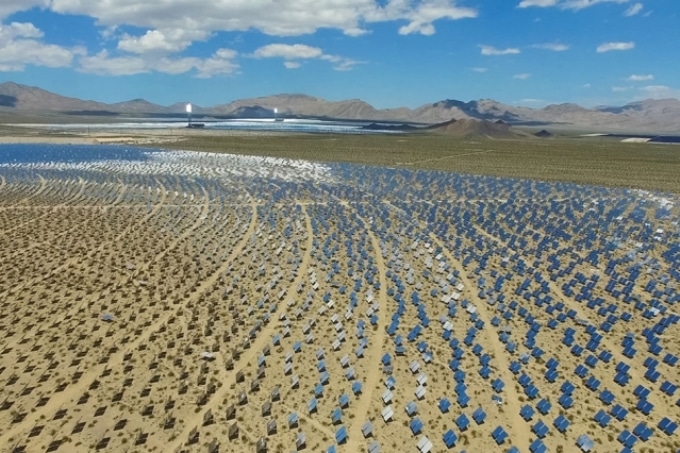Mar 28 2019
At a two-day ceremony held in Cairo recently, the U.S. Agency for International Development (USAID) has announced a $30 million award for MIT.
 A $30 million award from USAID will support MIT over the next five years in developing a Center of Excellence in Energy at Ain Shams University, Mansoura University, and Aswan University, in Egypt. The center will serve to connect researchers at the Egyptian universities with experts at MIT, to seek innovative solutions to the country’s energy challenges. (Image credit: MIT)
A $30 million award from USAID will support MIT over the next five years in developing a Center of Excellence in Energy at Ain Shams University, Mansoura University, and Aswan University, in Egypt. The center will serve to connect researchers at the Egyptian universities with experts at MIT, to seek innovative solutions to the country’s energy challenges. (Image credit: MIT)
MIT will use the USAID award to develop a Center of Excellence in Energy at Mansoura University, Ain Shams University, and Aswan University, in Egypt, over the next five years. The center will act as a platform to connect MIT experts with scientists at the Egyptian universities to look for novel solutions to the energy challenges of Egypt.
With a total investment of $90 million from USAID, the Center of Excellence in Energy is one among the three centers to be established in the country. The centers are formal collaborations between American and Egyptian universities and the private sector to promote innovation, research, and scholarships in water, energy, and agriculture. Besides the MIT-led center, the Cairo-based American University will collaborate with Alexandria University and Cornell University will team up with Cairo University, to establish similar centers to deal with challenges in the field of water and agriculture, respectively.
“The Centers will facilitate meaningful collaboration between American and Egyptian universities,” stated USAID Mission Director Sherry F. Carlin, in a statement. “They will bring together some of the best minds to collectively address shared goals and challenges, spur innovative thinking, encourage private sector engagement, and strengthen government policy in the agricultural, water, and energy sectors.”
At the ceremony, Carlin was present together with USAID Administrator Mark Green; Egypt’s minister of investment and international cooperation Sahar Nasr; and also Egypt’s minister of higher education and scientific research Khaled Abdel Ghaffar.
Ahmed Ghoniem, the Ronald C. Crane Professor in the Department of Mechanical Engineering of MIT, and Daniel Frey, a professor of mechanical engineering and the faculty research director for MIT D-Lab, will lead the Center of Excellence in Energy. The group will work to advance the education, research, and entrepreneurial capacity of Aswan, Mansoura, and Ain Shams universities over the next five years, to deal with most pressing energy-related issues in the country.
Egypt is one of those places that is likely to suffer significantly from climate change. If we learn how to solve these problems there, we can learn to scale the solutions and use them in many other places that need them as well.
Ahmed Ghoniem, the Ronald C. Crane Professor, Department of Mechanical Engineering, MIT.
The MIT team will use the USAID award to bring graduate students and faculty from Egypt to the Institute, in an attempt to learn the best way to approach massive, energy-related problems from an MIT standpoint.
“The MIT modus operandi is that we integrate research and education, and translate that into entrepreneurship,” stated Ghoniem. “We very much want to make that model available for Egyptian universities to emulate.”
“We’ll bring faculty and graduate students from Egypt to spend time with us, and we’ll solve problems shoulder to shoulder with them. That ‘mens-et-manus’ mentality is transmitted more effectively by immersing themselves here,” added Frey, referring to “mind and hand” motto of MIT.
Both Frey and Ghoniem will ensure that Egyptian students and faculty work with interdisciplinary scientists across MIT, to come up with renewable energy solutions to various challenges, including the practice of open-field burning in Egypt. Egypt is mainly an agricultural economy, and hence it generates a considerable amount of biomass, which is usually discarded by burning the waste in open fields—a practice that produces large amounts of greenhouse gases and pollution.
They call it the “black cloud.” One of our priorities is to work with them in converting this problem into a solution, using biomass as a clean energy source in the country.
Ahmed Ghoniem, the Ronald C. Crane Professor, Department of Mechanical Engineering, MIT.
In addition, the new center will work toward scaling up and developing sustainable projects that are already ongoing in Egypt. For example, Egypt is known to be the fourth largest user of wind energy and is now constructing the largest solar parks ever made in the world, with the aim to produce 42% of its electricity through renewable energy by 2025.
The team at MIT intends to foster connections between major industrial players and university researchers in the region, in order to widen Egypt’s wind, solar, and other types of clean energy usage.
“It’s a country where so many things are going on in the energy area that match MIT’s interest in promoting and developing renewable energy technologies as well as addressing global climate change problems,” stated Ghoniem.
A special emphasis will also be there throughout the five-year collaboration, involving Egyptian women as well as people with disabilities to come up with energy-related solutions.
We’ll be working with organizations in the country that [support] these groups, to try to pull them into the activities, and hopefully they can participate equally in education, research, and entrepreneurship.
Ahmed Ghoniem, the Ronald C. Crane Professor, Department of Mechanical Engineering, MIT.